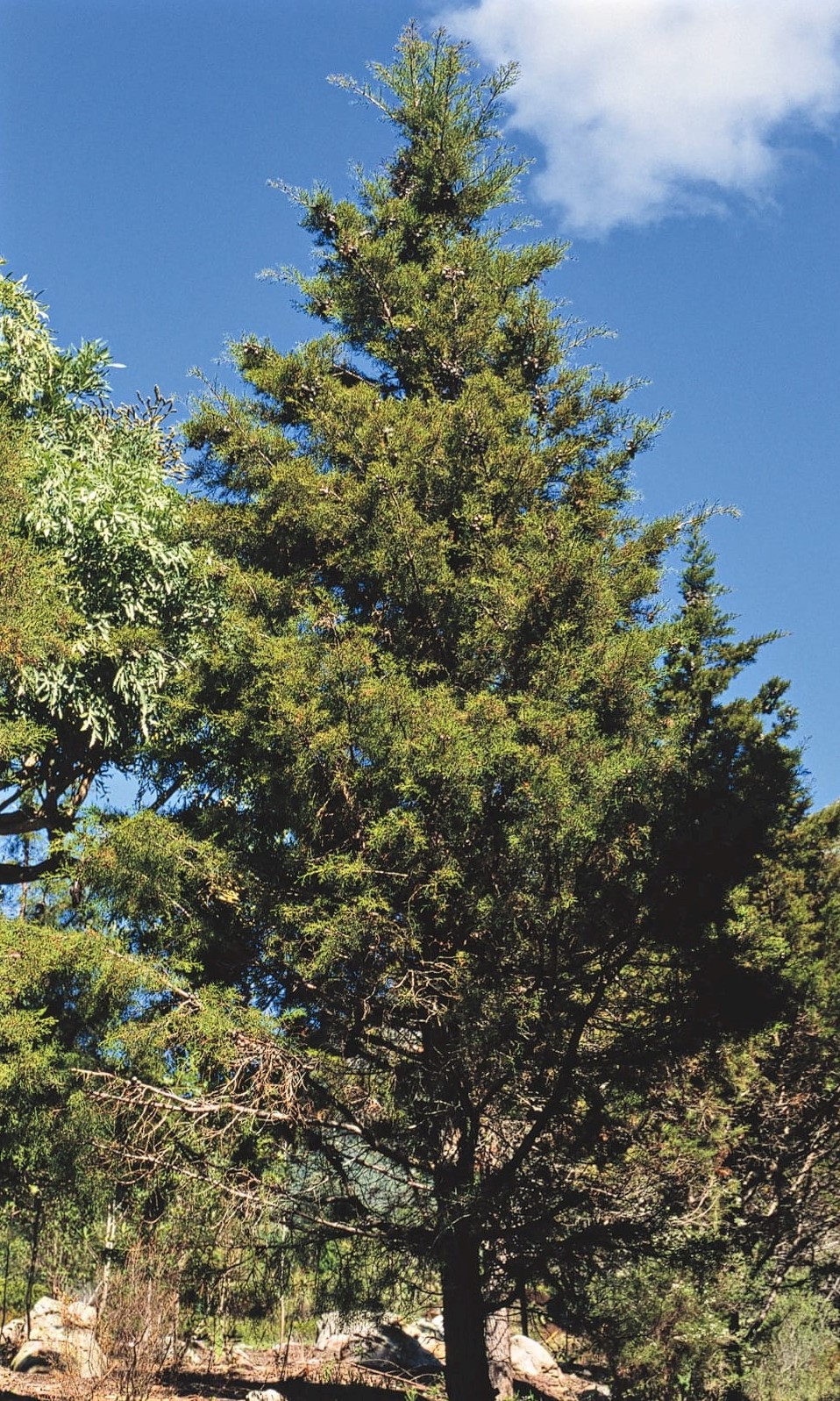Widdringtonia nodiflora
Credits
Article from New Trees by John Grimshaw & Ross Bayton
Recommended citation
'Widdringtonia nodiflora' from the website Trees and Shrubs Online (treesandshrubsonline.
Genus
Common Names
- Mountain Cedar/Cypress
- Sapree-wood
Synonyms
- W. cupressoides (L.) Endl.
- W. nodiflora var. dracomontana (Stapf) Silba
Shrub or small tree to 9 m; usually multistemmed, each stem developing from a swollen, subterranean base up to 3.5 m wide; rarely forming a monopodial tree to 40 m. Bark thin, grey, peeling in longitudinal strips to reveal a reddish inner layer. Crown (in the absence of fire) dense, narrow, columnar or conical. Juvenile leaves glaucous-green, 1–2.5 × 0.2 cm; mature leaves dark green, 1–1.2 × 0.5 mm, obtuse; mature leaves on terminal branchlets narrow, oblong. Male strobili 2–4 mm long. Female cones usually clustered or in whorls of four, globose, valvate, 1.5–2 cm diameter, glaucous-green though dark brown at maturity. Seed scales in a single whorl of four, dark brown, woody, smooth, slightly wrinkled or with a few small warts; each scale bearing multiple seeds, these accumulating in the (often resinous) cones until the branches that bear the cones are killed; the seeds are then released to colonise the charred ground. Seeds blackish brown, ovoid, wing conspicuous, ~0.4 cm long, reddish. Coates Palgrave 1990, Pauw & Linder 1997, Farjon 2005c. Distribution LESOTHO; MALAWI: Mt. Mulanje; MOZAMBIQUE; SOUTH AFRICA: Eastern Cape, Free State, Gauteng, KwaZulu-Natal, Mpumalanga, Western Cape; ZIMBABWE. Habitat Fire-prone ericaceous scrub and grasslands, often on the margins of montane forest, to 2590 m asl. USDA Hardiness Zone 9. Conservation status Lower Risk. This species is becoming increasingly rare in South Africa due to fire damage and wood collection. Large trees are restricted to the most inaccessible locations. Illustration Coates Palgrave 1990; NT896. Taxonomic note There is considerable confusion as to the identity of the cedars of Mt. Mulanje (‘Mulanje Cedar’). Some consider them an endemic species (W. whytei Rendle), while others lump them into W. nodiflora. Pauw & Linder (1997) have shown that there are two taxa on the mountain, each with a distinct habit: W. whytei forms a broad, layered crown and does not coppice.
With its wide range – extending away from the winter-rainfall area of the Western Cape where it grows in the fynbos, into the summer-rainfall area of eastern South Africa, and then northwards – Widdringtonia nodiflora at least offers a variety of provenances for experimentation. It is probable that most collections have been made from accessible populations in the Cape, but these are least likely to result in success in northern conditions; seed should be sought from its highest elevations, in the Drakensberg of eastern South Africa. Once again, though the species has often been tried, and is successful in California, there are no significant specimens outdoors in northern Europe.

